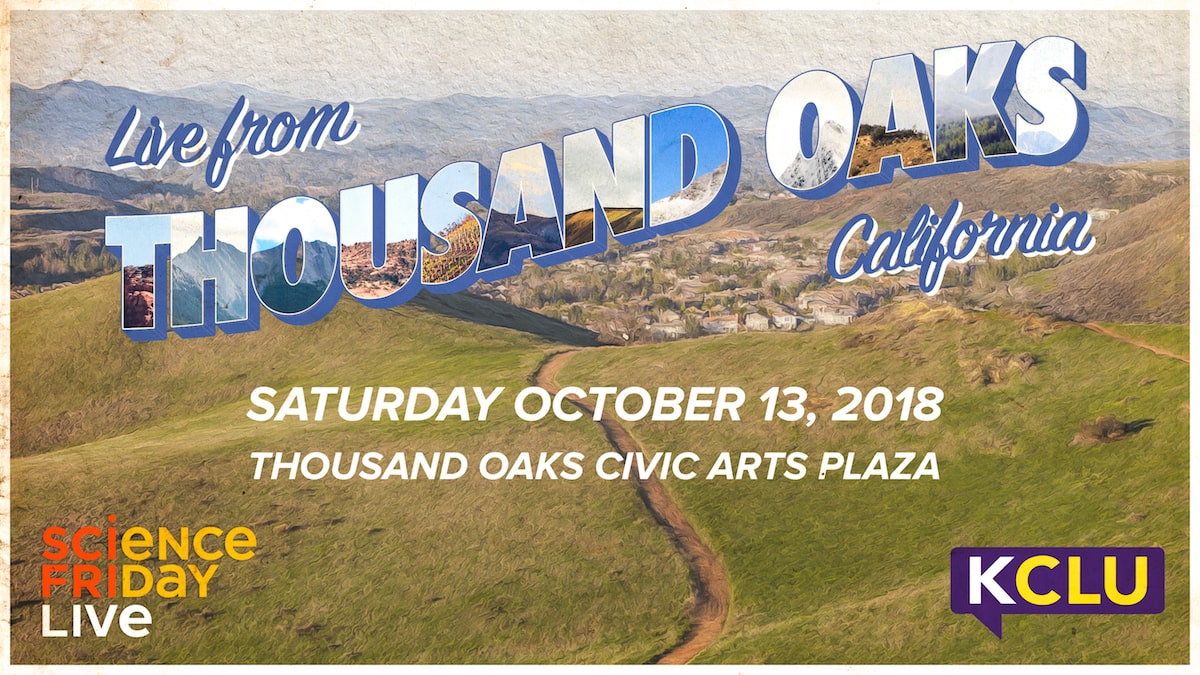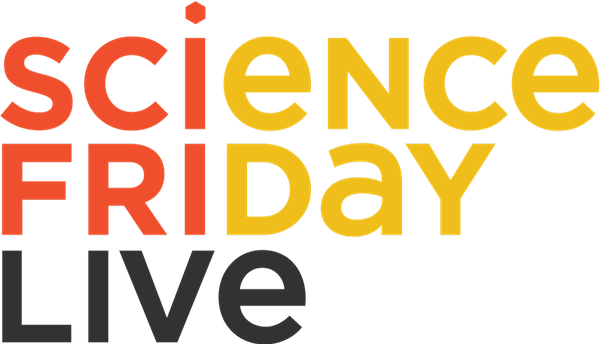Science Friday Live In Thousand Oaks
On Saturday, October 13, Science Friday heads to Thousand Oaks, California to learn about local science.

 When: Saturday, October 13, 2018 at 7:00PM (Doors at 6:30PM)
When: Saturday, October 13, 2018 at 7:00PM (Doors at 6:30PM)
Where: Thousand Oaks Civic Arts Plaza – Fred Kavli Theater
Tickets: Sold out.
Join Ira Flatow and the rest of the SciFri crew as we hit the road to uncover and report on the amazing science news and stories happening in your local area. This 90-minute program, produced in conjunction with KCLU, typically features live music, props, video screenings, and demonstrations. And as a bonus, the event will be recorded so you can be a part of the weekly Science Friday broadcast heard on your local station!
For this show, we will set out to explore what’s happening in California science!
How did you sleep last night? If you’re one of the estimated one in three American adults who gets less than seven hours of sleep per night, you may not want to answer that one. As researchers cement the connection between sleep and health, others are still asking why some people have fewer problems sleeping, and others recover more easily from lost sleep. On top of that, there seem to be both racial and gender divides in who suffers from sleep disorders.
UCLA’s Ketema Paul will explain where our genes come into the picture, and how they regulate our internal clock, sleep, and wakefulness—plus, why research in this realm was the subject of the 2017 Nobel Prize in Physiology. And he’ll explain how his own work has found genes outside the brain—in skeletal muscle, of all places—contributing to sleep loss recovery.
Step aside, honeybees, there’s a new pollinator in town. Hollis Woodard of UC Riverside will share how she’s zeroing in on the intricate life cycle of bumble bees, whose queens spend most of their life cycles solitary underground—but then emerge in the spring to singlehandedly forage for food, build a nest, and start colonies that eventually grow to number hundreds. How does the queen, who has to rear her first batch of young alone, get it all done? And how do bumblebees crown their new queens, in the absence of a honeybee’s royal jelly?
And UCLA’s Noa Pinter-Wollman studies the behavior of social arthropods, plus the spaces they occupy. Like how foraging ants don’t just read the ground for food clues before deciding to go hunting—they also respond to the flow of ants returning to the nest from foraging, which can be slowed or sped up by the shape of a single room at the entrance of the nest. And why the behavior of ant, bee, and spider societies are more than just amalgam of individuals—but collective behaviors that emerge from the masses. Could there be a human connection?
The two insect aficionados will share the mysteries of arthropod societies. Plus a video sneak peak into the world of barfing bumble bees.
What if, instead of searching YouTube for “cute cat videos,” you could just tell an artificial intelligence system that you were interested in watching a video of a kitten playing with a box, on, say, the beach? Virtual reality algorithms would then assemble this custom-built entertainment—which is exactly what you want, when you want it—without relying on creators to come up with the idea first. That’s just one of the many future applications of virtual reality and graphics technology imagined by Hao Li, director of USC’s Institute for Creative Technology’s Vision and Graphics Lab.
In this show, he’ll talk about how new tools could reinvent our definition of creator and audience, how VR could transform the remote work experience, and how face-swapping technology threatens our perception of what’s real in the news.
Debussy would have had a blast jamming out on a Moog synthesizer. Or at least that’s what Mark Ramos Nishita, more popularly known as Money Mark from the Beastie Boys, imagines the classical music great’s reaction might have been had he stuck around long enough to see synthesizer technology flourish. But Nishita has brought the two one step closer with his “Echolodeon.” The custom-built machine converts original piano rolls, created from actual performances by greats like Debussy, into MIDI signals routed through modern-day synthesizers.
In this performance, he’ll demonstrate the Echolodeon, and treat us to a few of his originals using drum machine and keyboard technology.
Christie Taylor was a producer for Science Friday. Her days involved diligent research, too many phone calls for an introvert, and asking scientists if they have any audio of that narwhal heartbeat.
Christopher Intagliata was Science Friday’s senior producer. He once served as a prop in an optical illusion and speaks passable Ira Flatowese.